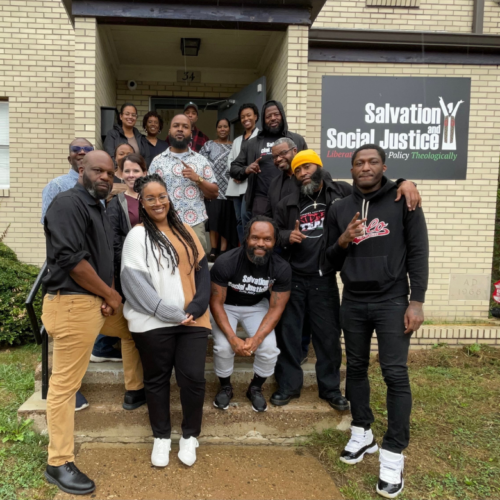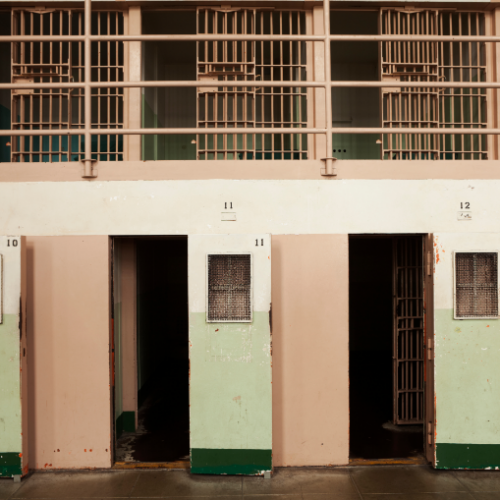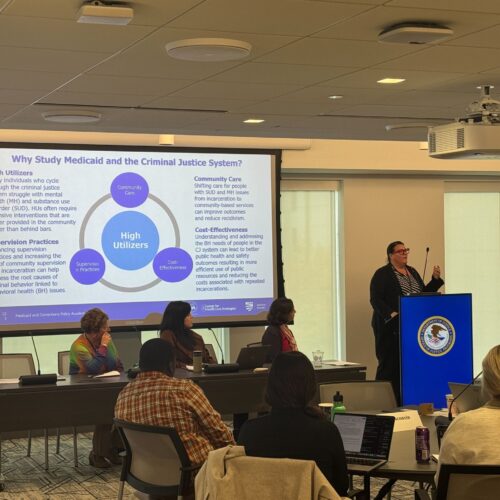California Business and Community Leaders Join Call for Improving Employment and Education Outcomes for People with Criminal Records
At 61 percent, California struggles with a recidivism rate just under the national average.
While research shows that the likelihood of reoffending can be reduced through education and employment, individuals with criminal records often face barriers to accessing both.
It is a challenge California leaders seem ready to face head-on, if the number of employers, government and corrections officials, and community members who gathered one day in late January at the Men’s Central Jail in downtown Los Angeles is any indication. The event, “Ending the School to Prison Pipeline,” was hosted by the Los Angeles Area Chamber of Commerce and focused on how education and employment can reduce recidivism in the state.
Support and Aspiration
Engaging with business leaders, said Los Angeles County Sheriff Jim McDonnell, can provide criminal justice stakeholders “the opportunity to bring resources to the table to break the cycle of incarceration.”
Noel Massie, president of UPS Southern California District and chair of the Los Angeles Area Chamber of Commerce, agreed. “The right partnership is when you have private and public sectors working [together] with philanthropic communities.”
At the event, employers and officials met with men and women incarcerated at the Los Angeles Men’s Central Jail and the Twin Towers Correctional Facility, who shared their aspirations upon returning home, including continuing education and working in nonprofit services. “I am hungry to prove myself again,” said one man serving time at the Men’s Central Jail, when asked why an employer should hire him over a candidate with similar qualifications.
Attendees also collectively brainstormed strategies for improving employment outcomes for individuals with criminal records, such as conducting interviews before one’s release and supporting entrepreneurial programs. “[Businesses] have to think more fundamentally about what we can do,” said David Wright, vice president of Plains All American Pipeline.
Reevaluating Hiring Policies
“Now, more than ever, we need business leadership,” said Lenore Anderson, executive director of Californians for Safety and Justice. This can include activities such as examining hiring practices to make them more inclusive, sharing screening practices with other businesses, collaborating with corrections about industry needs and skills gap, and partnering with community workforce providers to connect with a stream of qualified workers.
Responding to that call, Lupe Valdez, director of Public Affairs of Union Pacific Railroad, pledged to speak to her company’s vice president and director of Human Resources about changing their hiring policies.
Massie, too, committed to writing a letter to UPS’s CEO to “re-examine our hiring policies,” though he also acknowledged that the “number one responsibility [of businesses] is to protect our brand.” The notion of protecting a brand from the stigma of hiring individuals with criminal records can be a significant challenge for big business.
Correctional Education
Attendees such as Captain Joseph Dempsey of the Los Angeles County Sheriff’s Department highlighted the benefits of correctional education programs, which includes statistically better employment outcomes, lower rates of reoffending, and increased safety within correctional facilities.
“[There is] much less violence when inmates are involved in education and programming,” he said.
His department offers Education-Based Incarceration, a program that allows individuals to obtain a high school diploma and enroll in intensive curriculum-based courses, such as construction, commercial painting, job preparation, and computer skills.
Communities also reap the benefits of correctional education programs. They have been shown to “save a lot of lives and families and also save the state money,” said Scott Budnick, founder of the Anti-Recidivism Coalition. The latest research on correctional education, conducted by the RAND Corporation, calculated a savings of five dollars on reincarceration costs for every dollar invested in correctional education for states.
This discussion is a part of the growing conversation across the country between business leaders and policymakers on improving employment outcomes for individuals with criminal records. It is modeled after an event held in June 2014 at the White House and is inspired by “State Pathways to Prosperity,” an initiative of the Council of State Governments, which is supported by the CSG Justice Center’s Reentry and Employment project.
To learn about the White House event, click here.
A positive school experience, where a child feels secure, is essential for their well-being. However, for many children…
Read More The Path to Statewide Community Crisis Response in New Jersey: A Community Advocate’s Perspective
Read More
The Path to Statewide Community Crisis Response in New Jersey: A Community Advocate’s Perspective
Read More
 Supporting Children of Incarcerated Parents: Reimagining School and Community Collaboration
Supporting Children of Incarcerated Parents: Reimagining School and Community Collaboration
A positive school experience, where a child feels secure, is essential for…
Read More Bridging Communities and Correctional Systems: Q&A with CSG Justice Center Advisory Board Member Commissioner Nicholas Deml
Read More
Bridging Communities and Correctional Systems: Q&A with CSG Justice Center Advisory Board Member Commissioner Nicholas Deml
Read More
 Assigned to the Cloud Crew: The National Incarceration Association’s Hybrid Case Management for People with Behavioral Health Needs
Assigned to the Cloud Crew: The National Incarceration Association’s Hybrid Case Management for People with Behavioral Health Needs
When returning to their communities from criminal justice settings, people with behavioral…
Read More Meet the Medicaid and Corrections Policy Academy Mentor States
Meet the Medicaid and Corrections Policy Academy Mentor States
New Hampshire Department of Corrections Commissioner Helen Hanks presents at the Medicaid…
Read More










